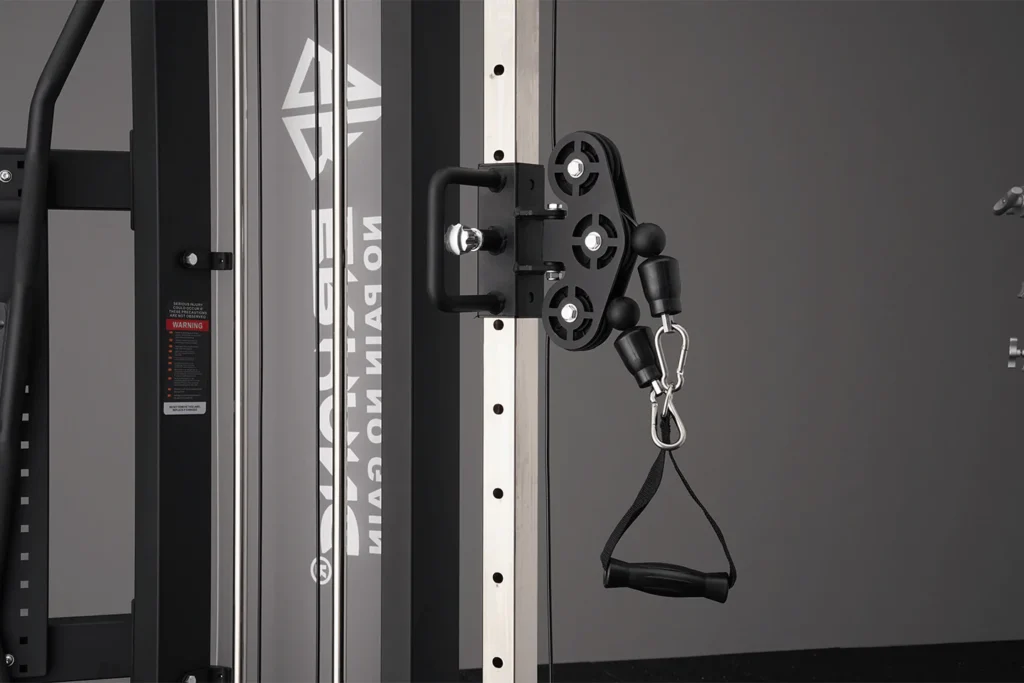Cable machines, also known as cable crossover machines or functional trainers, are a staple in many home and commercial gyms. Go with Mikolo cable machine now. These versatile pieces of equipment offer a wide range of exercises, allowing you to target multiple muscle groups with adjustable resistance. In this guide, we will explore the benefits of cable machines, how to use them effectively, and key considerations when purchasing one for your gym.
Benefits of Cable Machines
- Versatility: Cable machines are incredibly versatile, allowing for a wide range of exercises. You can perform both upper and lower body workouts, targeting specific muscles or working on compound movements.
- Adjustable Resistance: With adjustable weights, you can easily modify the resistance to suit your fitness level and the specific exercise you’re performing.
- Functional Training: Cable machines facilitate functional training, which mimics real-life movements and improves overall strength and coordination.
- Space Efficiency: These machines often combine multiple exercise stations into one, making them a space-efficient option for home gyms.
- Safety: The guided motion of cable machines reduces the risk of injury, making them ideal for both beginners and experienced lifters.

How to Use a Cable Machine
Using a cable machine correctly is essential to maximize benefits and prevent injury. Here are some popular exercises and how to perform them:
- Cable Chest Fly:
- Adjust the pulleys to chest height.
- Stand in the center with a handle in each hand.
- Step forward, pulling the handles together in front of your chest.
- Slowly return to the starting position.
- Cable Row:
- Attach a straight bar to the low pulley.
- Sit with your feet against the footrest, knees slightly bent.
- Pull the bar towards your torso, squeezing your shoulder blades together.
- Slowly extend your arms back to the starting position.
- Cable Bicep Curl:
- Attach a handle to the low pulley.
- Stand facing the machine, holding the handle with an underhand grip.
- Curl the handle towards your shoulder, keeping your elbow stationary.
- Lower the handle back down with control.
- Cable Squat:
- Attach a bar or rope to the low pulley.
- Stand facing the machine, holding the bar or rope with both hands.
- Squat down by bending your knees and hips, keeping your back straight.
- Push through your heels to return to the starting position.
Key Considerations When Buying a Cable Machine
When purchasing a cable machine, several factors should be taken into account:
- Build Quality: Look for machines made from high-quality materials, such as heavy-duty steel, to ensure durability and stability.
- Adjustability: Ensure the machine offers a wide range of height and resistance adjustments to accommodate various exercises and user heights.
- Size: Measure the space available in your gym and choose a machine that fits comfortably without overcrowding the area.
- Attachments: Check what attachments are included (e.g., handles, bars, ankle straps) and consider purchasing additional attachments for more exercise options.
- Price: Determine your budget and find a machine that offers the best value for money without compromising on quality and features.
- Warranty: A good warranty provides peace of mind. Look for machines with comprehensive warranties covering parts and labor.
Conclusion
Cable machines are an excellent addition to any gym, offering versatility, safety, and efficiency. By understanding their benefits, learning how to use them correctly, and knowing what to look for when purchasing, you can make an informed decision that enhances your fitness routine. Whether you’re a beginner or a seasoned athlete, a cable machine can help you achieve your fitness goals.







